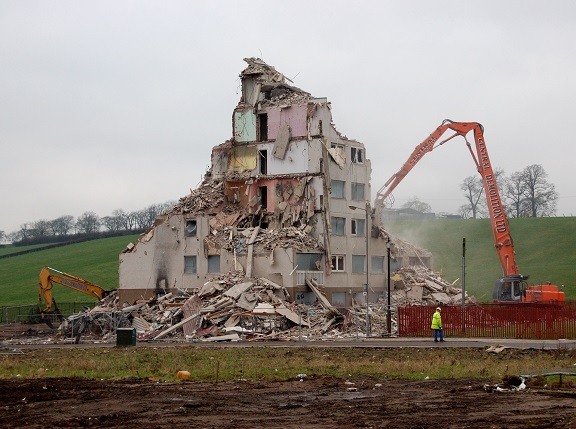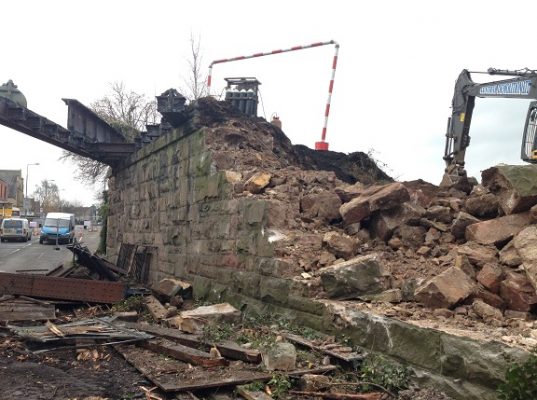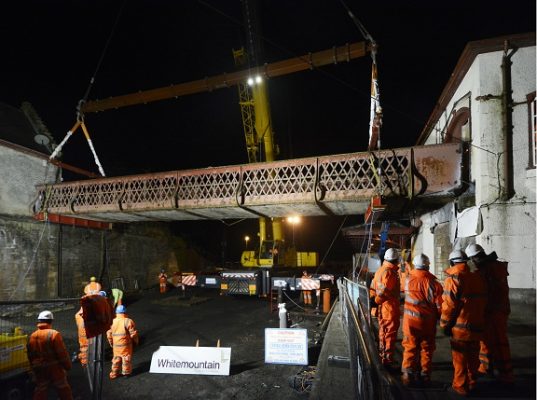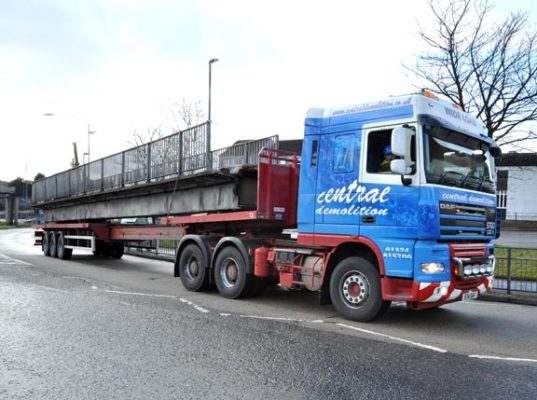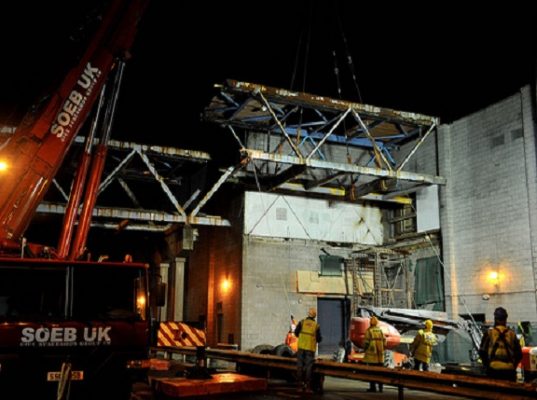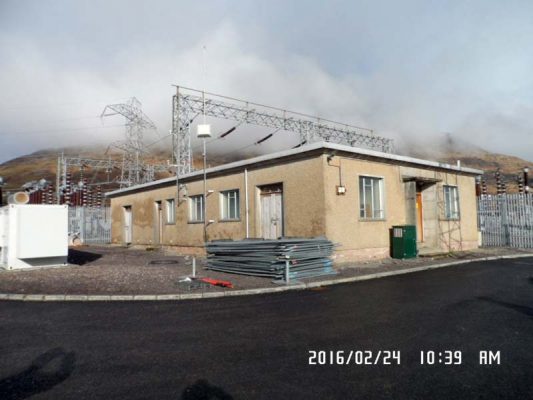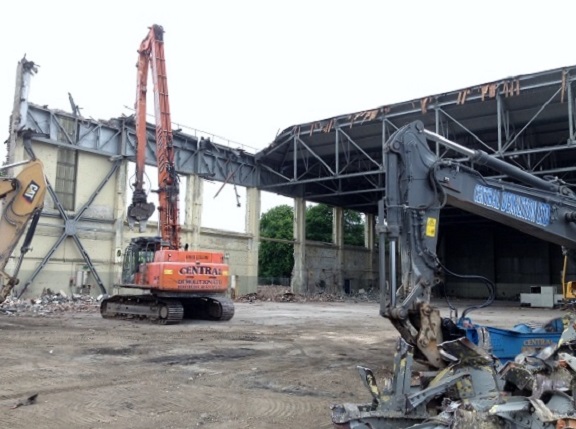
Central Demolition Limited were awarded the contract for the demolition of the Servisair Hangar at Edinburgh Airport. The hangar was located within a live airport environment.
The project involved the demolition of existing structures situated within Edinburgh Airport’s grounds, comprising of the hangar and adjacent lean-to offices. The hangar was a steel portal framed structure (approx. 70m x 57m; height to eaves approx. 18m) with a steel lattice roof, clad in brick masonry, plastic glazing panels to two faces, full width sliding doors to each gable, and a concrete floor. Within the hangar was a small storage area constructed of blockwork walls and steel mesh gates. The adjacent lean-to buildings were predominately of masonry construction with some internal plasterboard walls.
Prior to us commencing with the project, an asbestos survey had been commissioned which identified non-notifiable asbestos materials which had to be removed prior to demolition. Downpipes and asbestos gutters were subsequently removed prior to any demolition works commencing. Other preparatory works included a soft strip of all of the services, fixtures and fittings from the lean-tos and the removal of approximately 30m of redundant fencing.
The location of the site presented many challenges and risks. As always, all operatives received a comprehensive induction to introduce them to the site and its complexities. Surrounding the grounds were derelict buildings, live buildings which are operational and occupied 24/7, a live airport runway and a live electrical substation (only approx. 10ft away). With the site being surrounded in all directions, care and precision was of paramount importance.
A challenge which was apparent from day one was maintaining all necessary access required within the airport grounds. All emergency escape routes and access points were to be maintained at all times with no exception. The access road to the west of the site was to be fully accessible to airport staff 24/7 as this road serves the catering admin building which is operational 24 hours a day. An access road was also created to the south of the site to provide airport staff with uninterrupted access to the airfield where required. The roads were kept tidy at all times and a banksman was posted at our site entrance for safety.
One of the biggest risks presented by this project was the close proximity of the site to a live airport runway. It was of paramount importance that we caused no disruption to this runway. We took due care and attention at all times to ensure that dust and debris was prevented from entering the airside.
The site was bounded on two sides by an existing Edinburgh Airport security/restrictive zone fence – and physical contact to this fence is strictly prohibited. A minimum 3m distance from the fence was to be maintained at all times; if any personnel, plant or items would have encroached these parameters then work would have been halted. During the demolition works, a 360 degree excavator removed the lean-tos at both sides of the structure to allow sufficient access for demolition plant. All materials were pulled inwards towards the internal sides of the lean-tos to ensure that the 3m intrusion boundary was not compromised during the process.
The hangar doors on either side posed a challenge. They were only supported at the top by a rail, and therefore the removal process had the potential to be highly dangerous. Great care was taken during removal, and the doors were never opened during periods of strong wind. The doors had to be moved carefully and with precision, and therefore the doors were removed one at a time.
Owing to the construction and age of the structures, there was a continual risk of uncontrolled building collapse. During the demolition works, a high reach machine sheared sections of the roof and progressively demolished sections of the hangar walls to prevent uncontrolled collapse, by pulling them inwards towards the middle of the structure as the roof was being removed. A machine with sheer cut the trusses at both ends, allowing for each truss to fold in a controlled manner into the middle of the structure. At the end of each day, the structures were carefully inspected to ensure that they were stable and safe to be left in their current state. All voids created during each shift were backfilled so as to avoid our site team being faced with unsafe working conditions.
Due to the site being located within a live airport environment, it was important to be a good neighbour at all times. We kept our clients updated on our progress regularly, and tried to minimise the disruption caused by our works. We actively worked to keep noise to a minimum so as to not disrupt those working nearby. The site was dampened down regularly during our potential dust generating operations, including the breaking out of concrete, in order to minimise the volume of dust circulating.
Further to the demolition works, we grubbed up the floor slabs and foundations and these were processed in preparation for crushing. All rubble arising was crushed on-site and stockpiled safely for later use by the client. At 5m deep, the concrete foundations were found to be much deeper than anticipated.
All other materials arising from the demolition works were segregated, sorting materials such as metal and timber from general waste and depositing into skips for transportation off-site. All recyclable materials, except for the concrete which was crushed on-site, were transported to our state-of-the-art recycling centre in Bonnybridge where they were further processed for re-use and re-sale.
It was originally proposed that the works would take 8 weeks to complete. Unfortunately, the timescale slipped by a week due to the foundations of the hangar being found to me much deeper than expected. The works were completed safely and on budget, and our client was satisfied with our high quality of work. We have formed a good relationship with the key players involved in delivering this project, and we hope to work on further projects for Edinburgh Airport Limited where any future requirements arise.
